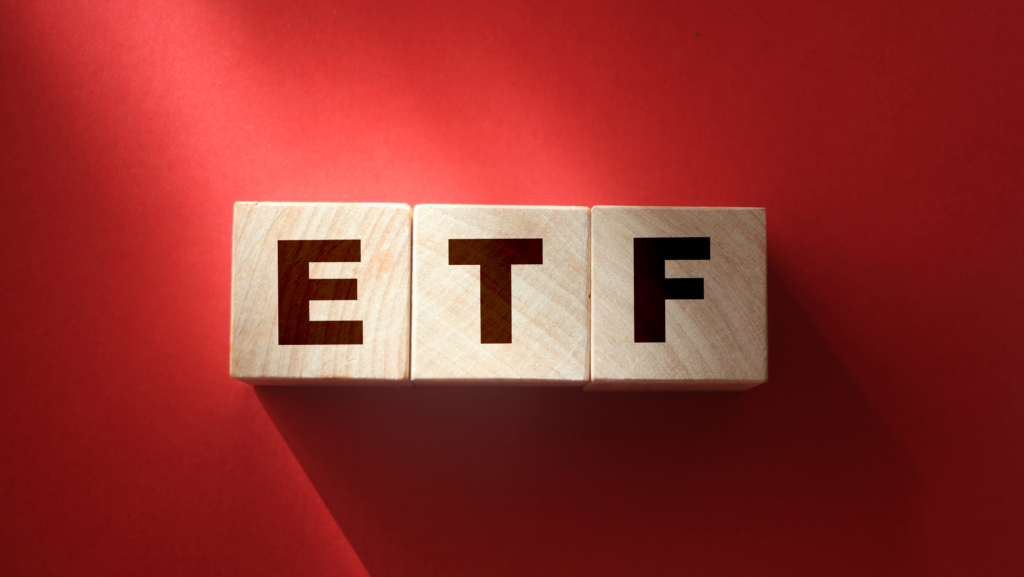Quick Summary
These are the best ethanol-related stocks in India for 2025:
Shree Renuka Sugars – Major ethanol producer benefiting from blending mandates
Balrampur Chini Mills – Diversified sugar company with strong ethanol capacity
Triveni Engineering – Leading integrated sugar and ethanol manufacturer
Bajaj Hindusthan Sugar – One of the largest ethanol suppliers to oil marketing companies
Dhampur Sugar Mills – Focused on ethanol expansion and green energy
Praj Industries – Pioneer in biofuel tech and ethanol plant engineering
EID Parry – Sugar and ethanol business with efficient distilleries
Why It Matters: With India targeting 20% ethanol blending by 2025, these companies are poised to gain from rising demand, favorable government policies, and the transition toward cleaner fuel alternatives, making them smart picks in the green energy investment space.
10 Best Ethanol Stocks in India
The table below lists the top 10 ethanol stocks in India:
| Stock Name (₹) | Market Cap (₹) | P/E Ratio | EPS (₹) | 52 Week High (₹) | 52 Week Low (₹) |
|---|---|---|---|---|---|
| Balrampur Chini Mills Ltd | 88,706,713,200 | 22 | 20 | 628 | 408 |
| Triveni Engineering & Industries Ltd | 82,995,137,448 | 18 | 21 | 468 | 313 |
| Shree Renuka Sugars Ltd | 55,766,413,423 | #N/A | -4 | 40 | 25 |
| EID Parry (India) Ltd | 178,797,640,211 | 16 | 65 | 1,247 | 639 |
| Dalmia Bharat Sugar and Industries Ltd | 23,784,013,799 | 7 | 40 | 465 | 279 |
| Bajaj Hindusthan Sugar Ltd | 23,674,659,126 | #N/A | -1 | 31 | 17 |
| Dhampur Sugar Mills Ltd | 7,973,364,037 | 14 | 9 | 171 | 110 |
| Bannari Amman Sugars Ltd | 45,142,920,000 | 37 | 97 | 4,444 | 3,000 |
| Avadh Sugar & Energy Ltd | 7,446,852,240 | 12 | 32 | 584 | 342 |
| Dwarikesh Sugar Industries Ltd | 6,950,655,202 | 46 | 1 | 58 | 34 |
In recent years, India’s ethanol-blended petrol (ebp) programme has accelerated as part of the broader energy transition strategy. Blending reached 18% by the end of 2024, up from ~12-13% in early 2024. The Government is on track to achieve 20% blending (E20) by the 2025 deadline, ahead of schedule. This rapid progress has already saved foreign exchange (by cutting fuel imports) and reduced CO2 emissions. Ethanol is being viewed as a non-disruptive transition fuel that leverages existing sugar and grain feedstocks and gasoline infrastructure to move toward cleaner transportation.
Ethanol blending also complements other green initiatives like EV adoption and the use of Biofuels. From April 2025, all new petrol vehicles in India will be made E20-compatible, which shows that the major market players in the auto industry are preparing for and adapting to the nationwide trend for E20 fuel. As of early 2025, E20 petrol is already being dispensed at over 17,400 fuel stations across the country.
India even introduced E100 fuel (which contains 93-93.5% ethanol) on a pilot basis for flex-fuel vehicles. This signals plans even beyond E20 in the long term.
Ethanol has grown from a mere fuel additive to a strategic renewable fuel that aligns with India’s goals of cleaner air, energy security, and support for the agricultural economy.
India’s Ethanol Industry: Growth, Feedstocks and Policy
India’s ethanol industry has expanded dramatically over the past decade. The expansion has been driven primarily by the Government’s mandates and the investment in ethanol distilleries.
Ethanol supply for blending jumped from just 380 million liters in 2013-14 to 7.07 billion liters in 2023-24. This explosive growth enabled blending rates to rise from barely ~2% a decade ago to nearly 18% by 2024.
The country first achieved 10% blending (E10) in mid-2022, and is moving toward 20% (E20) by 2025 – a target advanced by 5 years (originally 2030). Hitting E20 will require about 1,016 crore liters (10.16 billion liters) of ethanol annually, so a sustained production growth is necessary. This is good news for investors looking to invest in ethanol stocks in India, as the growth in this sector is backed by the Government.
Feedstocks & Production: Ethanol in India is primarily a by-product of sugar production, and secondarily from grains. Sugar mills produce ethanol by fermenting molasses (a residue from sugarcane processing) or directly from sugarcane juice.
The government allows different routes for Ethanol production, but the most recommended ones are:
- C-heavy molasses (for maximum sugar extraction);
- B-heavy molasses (sacrificing some sugar output); and
- Sugarcane juice/syrup is directly used for ethanol.
Additionally, grain-based ethanol has been promoted – distilleries can use surplus food grains like maize or broken rice.
India’s ethanol is a 1st-generation (1G) biofuel, but it plans for advanced biofuels (like 2G ethanol from crop waste) in the future.
Strong government policy support underpins the ethanol boom. The National Biofuels Policy set ambitious blending goals and financial incentives. As mentioned earlier, the current target is 20% ethanol in petrol by 2025-26, and the country is on track to reach E20 by October 2025, five years ahead of the original plan. To achieve this, the government launched interest subvention schemes to bankroll new distilleries and allowed the use of alternative feedstocks. Oil marketing companies (OMCs) have been mandated to procure ethanol at fixed remunerative prices set annually, for 2024-25, ex-mill ethanol prices were hiked to ₹65.61/L for sugarcane juice-based ethanol, ₹60.73 for B-heavy, and ₹57.97 for C-heavy molasses. These guaranteed prices (recently raised ~3–5%) make ethanol production attractive for sugar mills (and thus make it an attractive proposition for their investors).
The policy has been so successful that by early 2025, the blending program was nearing 20%, and a government committee is now exploring going beyond E20 in the coming years.
Government Policy is heavily tilted in favor of ethanol production, even to the point of sacrificing some export revenue. In a further move to improve ethanol production, the government has also curbed the export of sugar, so that more cane can be used toward the production of ethanol. Officials stated that sugar export quotas will be decided only after ensuring enough ethanol production to meet blending targets.
India’s ethanol industry is experiencing unprecedented growth, supported by robust demand from blending mandates, abundant feedstock from the sugar sector, and proactive government intervention.
By the way, did you know that, as an Indian investor, you can invest in ethanol stocks and other sectors in the USA as well? That’s right!
Through Appreciate, India’s best online trading app, you can invest in any US stocks of your choice, sitting right here in India.
What are Ethanol Stocks?
Ethanol stocks are shares of companies that are in the business of producing, distributing, and selling ethanol. These stocks come under the umbrella of the renewable energy sector, which guarantees energy derived from applications that are both ecologically responsible and sustainable.
Investing in ethanol stocks allows you to be part of the growing market of renewable energy. Such stocks may be steadily gaining interest as more and more people around the globe are slowly placing their focus on diminishing their carbon footprints and making a shift towards cleaner sources of energy. Ethanol stocks can offer enormous growth potential in markets like India, where there are encouraging government policies and initiatives towards renewable energy.
Investments in ethanol stocks are also very important from another perspective; it is a crucial step toward supporting the transformation to green and sustainable energy.
Best Ethanol Stocks in India: Overview and Financial Performance Analysis
Several companies in India have taken the lead in ethanol production. Most of these companies are sugar manufacturers who have heavily invested in ethanol distilleries. Here, we have analysed the operations, financial performance, and the latest developments in some of the top ethanol stock picks in India for 2025.
Important Disclaimer: Please note that this content is purely informational and educational, and should not be taken as investment advice. It is important to conduct your own research before making any investment decisions.
Dwarikesh Sugar Industries Ltd.
Dwarikesh is a mid-sized integrated sugar producer based in Uttar Pradesh (incorporated 1993). It operates three sugar mills with a combined crushing capacity of ~21,500 TCD (tons of cane per day). The company has two distilleries with a total ethanol capacity of 337.5 KL per day, established through expansions completed in 2022. This yields roughly ~11 crore liters of ethanol annually at full utilization. Dwarikesh also co-generates ~94 MW of power from bagasse (with ~56 MW exported to the grid). Its product mix includes sugar, ethanol, power, and allied products like molasses, sanitizer alcohol, biocompost, etc. The company prides itself on forward integration – ethanol now contributes a growing share of revenue, cushioning the cyclicality of sugar prices.
Financials (FY2024 & Recent): After a strong run in previous years, Dwarikesh faced headwinds in FY2023- 24 due to lower sugarcane availability. FY24 revenue was ₹1,710 crore, with net profit ₹83.5 crore (down ~20% YoY)
The decline was mainly because the 2023-24 sugar season ended early (due to a red rot disease outbreak in cane), which reduced sugar production and molasses output. By Q1 FY2024- 25, the company even posted a net loss of ₹9.7 crore, as sugar sales plunged 40% YoY (cane crushing ceased early) and ethanol sales volume dropped sharply due to feedstock constraints. Dwarikesh sold only 123 lakh liters of industrial alcohol in Q1 FY25 vs 303 lakh liters in Q1 FY24. Because of the restrictions on using cane juice and B-heavy molasses for ethanol (imposed by the government to prioritize sugar output). However, despite the H1 FY25 slump, the full FY24 ethanol sales were actually higher YoY – 94.4 crore liters in FY24 vs 84.2 crore in FY23, thanks to new capacity. The company expects performance to improve in H2 FY25 as crushing resumes and the cap on sugar-to-ethanol diversion is lifted.
The table below shows the performance highlights of Dwarikesh Sugar Industries Limited (all figures in Millions INR):
| Metric | FY 2023-24 | FY 2022-23 | FY 2022-21 | FY 2021-20 | FY 2020-19 |
|---|---|---|---|---|---|
| Revenue | 17,096 | 21,030 | 19,741 | 18,388 | 13,361 |
| Revenue Growth | -18.71% | 6.53% | 7.35% | 37.63% | 23.25% |
| Gross Profit | 4,304 | 4,484 | 4,810 | 3,908 | 2,956 |
| Operating Income | 1,525 | 1,752 | 2,491 | 1,657 | 1,022 |
| Pretax Income | 1,440 | 1,525 | 2,187 | 1,198 | 716 |
| Net Income | 835 | 1,047 | 1,552 | 915 | 735 |
| Net Income Growth | -20.27% | -32.52% | 69.56% | 24.62% | -22.77% |
| EBITDA | 2,159 | 2,292 | 2,896 | 2,032 | 1,355 |
| EBITDA Margin | 12.63% | 10.90% | 14.67% | 11.05% | 10.14% |
| EBIT | 1,634 | 1,790 | 2,460 | 1,623 | 987 |
| EBIT Margin | 0 | 0 | 0 | 0 | 0 |
Recent Developments: Dwarikesh has positioned itself as a structural ethanol play. Management has emphasized that ethanol provides better margins (especially using B-heavy molasses) and is key to the company’s future. The distilleries are running at full capacity, and the company has no major capex planned in the immediate term (having just expanded in 2022). However, Dwarikesh has been proactive in farm interventions after the red rot disease – to ensure cane volumes normalize. It also benefits from a strong balance sheet (debt-to-equity ~0.3x) and has consistently rewarded shareholders (e.g. ₹2/share interim dividend in FY23). Analysts view Dwarikesh as an efficient, low-cost producer; its ability to withstand sugar downturns by pivoting to ethanol is highlighted as one of the company’s key strengths. Dwarikesh remains one of the top ethanol companies in India and is poised to rebound with normalized cane output and a supportive policy.
Triveni Engineering & Industries Ltd.
Triveni Engineering is one of India’s largest sugar producers. It is a diversified conglomerate founded in 1932, with businesses in sugar, alcohol, power transmission gear, and water treatment. It currently operates 7 sugar mills in Uttar Pradesh.
Triveni’s sugarcane crushing capacity is ~60,000 TCD, and it has invested heavily in ethanol. The company’s distilleries use molasses (and also grains in off-season) to produce fuel ethanol and extra-neutral alcohol (ENA). As of early 2024, Triveni’s ethanol capacity was about 660 KLPD, which was being expanded. A new dual-feed distillery at Rani Nangal (UP) was commissioned in March 2024, which will raise their total capacity to 860 KLPD.
Triveni deferred another planned expansion (250 KLPD at Sabitgarh) for now. But longer-term it envisions reaching 1,100 KLPD (as announced earlier). At 1,100 KLPD, Triveni could produce ~31 crore liters of ethanol per year by FY25.
Triveni also aims to divert 12% of its sugar production to ethanol, aligning with the industry expectation to divert ~4.5 million tons of sugar nationwide for E20. The company is also entering the beverage alcohol (IMFL) market, so from 2025 onwards, it will be able to use its ethanol for liquor production as well.
Financials (FY2024 & Recent): Triveni had an unusual profit swing due to one-off gains in the previous year. FY2023-24 revenue was ₹6,151 crore (slightly down 2.5% YoY) and net profit ₹395 crore. Profit fell 78% YoY because FY23 had a large exceptional gain – Triveni had divested a stake in Triveni Turbine (its affiliate) which boosted the prior year’s profit. Excluding that, operationally, FY24 saw moderate growth: sugar sales volume rose ~12% and realizations ~5%, though margins were hit by higher cane costs. The ban on sugar exports and the prohibition on using cane juice for ethanol in that period dented revenues and profits. By 9M FY25 (April–Dec 2024), Triveni’s consolidated revenue grew ~3.6% to ₹4,060 crore, but PAT was only ₹51 crore (down ~78% YoY). Q3 FY25 saw some recovery – alcohol (ethanol) revenues were up ~4.4% YoY for the quarter, aided by better prices and higher grain-ethanol production. However, sugar profitability was subdued due to low prices and higher costs. The distillery segment’s performance improved with the new capacity coming online and a higher proportion of grain-based ethanol which fetched improved realizations. Triveni’s balance sheet remains strong (gearing <0.5x) and it had healthy sugar inventory entering 2025 (which could be monetized as prices firm up).
The table below shows the performance highlights of Triveni Engineering & Industries Ltd. (all figures in Millions INR):
| Metric | FY 2023-24 | FY 2022-23 | FY 2022-21 | FY 2021-20 | FY 2020-19 |
|---|---|---|---|---|---|
| Revenue | 52201 | 56168 | 41838 | 44878 | 42001 |
| Revenue Growth | -7.06% | 34.25% | -6.77% | 6.85% | 33.36% |
| Gross Profit | 16201 | 15304 | 12712 | 10090 | 9104 |
| Operating Income | 12398 | 6192 | 6493 | 5161 | 5365 |
| Pretax Income | 5290 | 19636 | 5738 | 4598 | 4456 |
| Net Income | 3952 | 17918 | 4241 | 2946 | 3351 |
| Net Income Growth | -77.95% | 322.54% | 43.94% | -12.09% | 54.95% |
| EBITDA | 6884 | 20975 | 6499 | 5893 | 5794 |
| EBITDA Margin | 13.19% | 37.34% | 15.53% | 13.13% | 13.80% |
| EBIT | 5842 | 20040 | 5691 | 5102 | 5045 |
| EBIT Margin | 11.19% | 35.68% | 13.60% | 11.37% | 12.01% |
Outlook & Developments: Triveni’s management is cautiously optimistic. They note short-term challenges from policy changes (e.g. the temporary curbs on ethanol feedstock) but are bullish on long-term fundamentals. With the export ban likely to ease and ethanol policy now even more favorable (price hikes, no diversion caps), Triveni expects better margins ahead. The company’s ethanol expansion is a major growth driver, and the move into IMFL (liquor) production from Q1 FY26 could also bring more diversification in their revenue streams.
On the stock front, Triveni’s shares have performed relatively well, reflecting its diversified portfolio. The stock has a market cap around ₹8,300 crore. Analysts generally have a positive view (rated “Buy”) on Triveni given its ethanol growth and non-sugar businesses (gears and water) that add stability. Investors should watch for execution of the remaining ethanol capacity expansion and any stake monetisation (the company still holds ~21.8% in Triveni Turbine as a financial investment). Overall, Triveni looks like a balanced opportunity for investors looking to invest in ethanol stocks, with less volatility than pure-play sugar firms.
Shree Renuka Sugars Ltd
Established in 1995, Shree Renuka Sugars Ltd is a leading name in the ethanol production sector in India. With its strategic location in Karnataka, the company has a substantial ethanol production capacity of 1,250 kilolitres per day. Shree Renuka Sugars is a significant player in sugar manufacturing and ethanol production, contributing to India’s renewable energy goals.
The company’s financial performance has shown steady growth, supported by its large production capacity and strategic investments. Shree Renuka Sugars’ key strengths include its large-scale operations and technological advancements.
Balrampur Chini Mills Ltd.
Balrampur Chini, established 1975 and headquartered in Kolkata (though its operations are in Uttar Pradesh), is one of India’s largest sugar producers. It has 11 sugar factories in UP and a crushing capacity of 80,000 TCD – among the highest in the industry. Balrampur was an early mover in diversification: it operates multiple cogeneration plants (175.7 MW saleable capacity) and a massive distillery setup. Its distilleries have a combined capacity of 1,050 KLPD (kiloliters per day), equivalent to ~35 crore liters per year. This makes Balrampur one of the largest ethanol producers in India. The company uses advanced processes to maximize sugar recovery and has also introduced branded bio-manure products from pressmud. Balrampur’s scale and efficiencies (high recoveries, low cost of production) have made it a consistently profitable sugar player.
Financials (FY2024 & Recent): Balrampur delivered strong results in FY23-24 thanks to high sugar prices and ethanol volumes. FY24 revenue was ₹5,594 crore (up 20% YoY) and net profit ₹534 crore, which surged 88% YoY. Profitability jumped as sugar prices firmed and the company leveraged its expanded ethanol capacity. In FY24 it sold ~16.5 crore liters of ethanol (including ethanol and ENA), and ethanol contributed significantly to operating profit (distillery EBIT margins ~19%). The return on equity improved to ~17%. In the latest quarter available, Q1 FY25, Balrampur saw some moderation: revenue grew just +2.3% YoY to ₹1,422 crore, and PAT was ₹70 crore (slightly down 5%). The management attributed the muted Q1 to “regulatory issues surrounding distillery operations” that led to lower ethanol production. Indeed, a shorter crushing season (due to lower cane availability) meant sugarcane crushing was down ~54% and sugar production down 48% YoY, which in turn limited molasses for ethanol and left fixed overheads under-absorbed. Despite that, sugar performed well – Q1 sugar sales volume grew ~3% and average realization by 5.5%. Balrampur’s ethanol segment remained robust with improved margins, and for the full FY24, distillery output and sales were at record levels (enabled by the new 320 KLPD distillery commissioned in 2022).
The table below shows the performance highlights of Balrampur Chini Mills Ltd. (all figures in Millions INR):
| Metric | FY 2023-24 | FY 2022-23 | FY 2022-21 | FY 2021-20 | FY 2020-19 |
|---|---|---|---|---|---|
| Revenue | 55937 | 46659 | 47733 | 46725 | 44626 |
| Revenue Growth | 19.89% | -2.25% | 2.16% | 4.70% | 4.13% |
| Gross Profit | 15681 | 12566 | 12013 | 11050 | 8590 |
| Operating Income | 11683 | 3920 | 5933 | 6020 | 5806 |
| Pretax Income | 7422 | 4083 | 5987 | 6092 | 5681 |
| Net Income | 5345 | 2842 | 4646 | 4798 | 5194 |
| Net Income Growth | 88.09% | -38.84% | -3.16% | -7.62% | -9.81% |
| EBITDA | 7862 | 5748 | 7315 | 7406 | 7256 |
| EBITDA Margin | 14.05% | 12.32% | 15.33% | 15.85% | 16.26% |
| EBIT | 6198 | 4453 | 6176 | 6287 | 6242 |
| EBIT Margin | 11.08% | 9.54% | 12.94% | 13.46% | 13.99% |
Recent Updates: Balrampur Chini is often considered a benchmark for the sugar-ethanol sector due to its strong management (led by CEO Vivek Saraogi) and consistent execution. The company completed its major capex cycle (expanding distilleries to 1050 KLPD and modernizing mills) by 2022. It is now reaping the benefits: a high ethanol blend ratio (it can divert a sizable portion of cane to ethanol), and flexibility to switch between sugar and ethanol depending on market conditions. With the government’s latest ethanol price hikes, Balrampur stands to gain as a top supplier to OMCs. The company also has a healthy balance sheet – debt-to-equity ~0.8x and strong cash flows to fund cane payments and dividends. Its market cap is around ₹11,200 crore, making it one of the largest in the sector.
Analysts generally have Buy ratings on Balrampur Chini, citing its high distillery capacity, cost leadership, and strong corporate governance. Risks include any adverse weather in UP or government interference in sugar pricing. But given its scale and integration, Balrampur is viewed as a relatively lower-risk pick among ethanol stocks, with significant upside as ethanol blending scales up.
EID Parry (India) Ltd.
EID Parry is a South India-based sugar manufacturer and part of the ₹78,000 crore Murugappa Group. They established India’s first sugar plant in 1842. EID Parry operates six sugar mills across Tamil Nadu, Karnataka, and Andhra Pradesh and one standalone distillery. Its sugarcane crushing capacity is ~40,300 TCD, and distillery capacity 417 KLPD. The company is unique in its diversification: aside from sugar and ethanol, EID Parry has significant nutraceutical and bio-products businesses. It is a global leader in organic spirulina and micro-algae products, and has a nutraceuticals division with facilities in TN. Additionally, EID Parry owns a majority stake (~58%) in Coromandel International Ltd, a leading fertilizer and agri-input company – this means a chunk of EID Parry’s consolidated revenue and profit actually comes from fertilizers. (Notably, the massive consolidated figures we see for EID Parry include Coromandel’s business, which explains EID’s far larger revenue base compared to other sugar companies.) The sugar division itself is well-integrated with 140 MW co-gen and the 417 KLPD distilleries that produce ethanol and ENA.
Financials (FY2024 & Recent): On a consolidated basis (including Coromandel), EID Parry had FY24 revenue of ₹29,413 crore and net profit ₹1,617 crore. These were down 16.5% and 11.5% respectively YoY, mainly due to one-off gains and high base in the prior year. For a clearer picture, excluding Coromandel, the standalone sugar-ethanol business of EID Parry had more modest numbers. In Q1 FY25, EID Parry reported consolidated revenue of ₹6,747 crore and PAT ₹226 crore, both down slightly (~4% and 30% YoY). The sugar segment faced lower domestic releases and a ban on exports which hurt sales. However, ethanol operations showed positive momentum: Q1 FY25 distillery sales were 3.90 crore liters (2.17 cr L ethanol + 1.73 cr L ENA), up from 3.43 cr L YoY. The average realization also improved to ₹64.3 per liter vs ₹61.8 last year, boosting ethanol revenues. This reflects better pricing and product mix (higher ENA for potable/liquor which fetches premium). For the full FY24, EID’s sugar business diverted ~16% of cane toward ethanol (lower than some peers due to feedstock constraints in drought-hit TN). Still, it produced over 11 crore liters of ethanol in FY24 and is aiming to increase that as new capacities stabilize.
The table below shows the performance highlights of EID Parry (India) Ltd. (all figures in Millions INR):
| Metric | FY 2023-24 | FY 2022-23 | FY 2022-21 | FY 2021-20 | FY 2020-19 |
|---|---|---|---|---|---|
| Revenue | 294131 | 352438 | 166533 | 151033 | 137108 |
| Revenue Growth | -16.54% | 111.63% | 10.26% | 10.16% | 2.85% |
| Gross Profit | 65208 | 73324 | -16012 | 13250 | 10660 |
| Operating Income | 54547 | 28177 | 20718 | 18107 | 16811 |
| Pretax Income | 21752 | 25643 | 21291 | 15393 | 12662 |
| Net Income | 8997 | 9475 | 9068 | 4474 | 4679 |
| Net Income Growth | -5.05% | 4.48% | 102.70% | -4.38% | 204.82% |
| EBITDA | 29171 | 32745 | 26124 | 21029 | 20156 |
| EBITDA Margin | 9.92% | 9.29% | 15.69% | 13.92% | 14.70% |
| EBIT | 24963 | 28980 | 22785 | 16869 | 16966 |
| EBIT Margin | 8.49% | 8.22% | 13.68% | 11.17% | 12.37% |
Notable Developments: EID Parry’s strength lies in its diversified revenue streams and strong parentage. The sugar and ethanol unit benefits from being part of Murugappa Group (which ensures financial stability). While sugar operations in Tamil Nadu are subject to monsoon variations (and have seen declining cane area), the company has been innovating – e.g., introducing super sweet sorghum as an alternative feedstock and improving farm yields. EID Parry also has a small refinery for export sugar (via its subsidiary). A highlight is that EID’s ethanol is not only used for fuel blending but also in the spirits industry (through ENA), giving it flexibility. With government policies on exports, ethanol pricing, and MSP (minimum sugar price) evolving, the company notes that policy changes will “set the tone” for the business going forward. Market-wise, EID Parry’s stock is valued partly on its sugar business and partly on Coromandel’s value (investors often do a holding-company discount model). Its market cap is the highest among listed sugar firms at around ₹14,500 crore. The stock has traded at low P/E (~11x) due to the conglomerate structure. Many analysts view EID Parry as a “sum-of-parts” story – a way to invest in Coromandel (fertilizers) with a free upside on sugar/ethanol. For ethanol-specific investors, EID Parry offers stability and steady growth rather than explosive upside, but it remains a solid pick with lower volatility and consistent dividends.
Shree Renuka Sugars Ltd.
Shree Renuka Sugars (SRSL) is one of India’s largest sugar refiners and a major ethanol producer, now majority-owned by Singapore’s Wilmar International. Renuka has operations in Maharashtra and Karnataka with 8 integrated sugar mills and two large port-based sugar refineries.
It has aggressively grown its distillery footprint in recent years. In March 2023, SRSL completed a big expansion, boosting its ethanol capacity from 720 KLPD to 1,250 KLPD. This made it the largest ethanol capacity holder in India. The expansion involved upping capacities at its Athani and Munoli plants (e.g. one site from 300 to 450 KLPD, another from 120 to 500 KLPD). Renuka’s 1,250 KLPD (~41+ crore L/yr) capacity is now operational, and the company has even approved plans to further increase to 1,400 KLPD in the future.
Aside from ethanol, Renuka is known for its large sugar refineries (at Haldia and Karnataka) which import raw sugar and re-export refined sugar – this export-oriented model leverages global sugar arbitrage. However, the company went through financial distress in the 2010s and was taken over by Wilmar, which restructured its debt and invested in capacity expansion.
Financials (FY2024 & Recent): Shree Renuka’s financial performance has improved in terms of revenue but it remains in losses due to high interest and depreciation (from past debt and new capex). FY2023-24 revenue was ₹11,319 crore, up a hefty 47.6% YoY, reflecting higher sugar prices and volumes (especially refinery exports) and initial ethanol ramp-up. However, the company posted a net loss of ₹627 crore in FY24, widening from a ₹197 crore loss in FY23. Operating margins are thin – FY24 EBITDA margin was only ~0.5% – because the refining business has low margins and the interest expense is heavy. In Q1 FY25, Renuka’s revenue grew ~33% YoY to ₹3,034 crore, and it continued to incur a net loss of ₹166 crore.
On the positive side, ethanol volumes have been rising: FY24 ethanol production was 156 million liters (15.6 crore L), a substantial jump aided by new capacity in the last quarter. Ethanol sales contributed ₹860.4 crore to revenue in FY24. We should see further improvement in FY25 as the full-year effect of 1,250 KLPD capacity plays out (management expects ethanol could form ~40% of total revenues at full utilization). The company’s refining segment also benefitted from high global sugar prices in 2024 (though export bans in India meant it processed imported raws mainly for export markets).
The table below shows the performance highlights of Shree Renuka Sugars Ltd. (all figures in Millions INR):
| Metric | FY 2023-24 | FY 2022-23 | FY 2022-21 | FY 2021-20 | FY 2020-19 |
|---|---|---|---|---|---|
| Revenue | 112998 | 90207 | 63746 | 55554 | 47408 |
| Revenue Growth | 25.27% | 41.51% | 14.75% | 17.18% | 5.83% |
| Gross Profit | 14480 | 18459 | 10108 | 10370 | 6036 |
| Operating Income | 4414 | 4118 | 2501 | 4783 | -1049 |
| Pretax Income | -4618 | -1796 | -1386 | 518 | -3549 |
| Net Income | -6271 | -1967 | -1367 | -1165 | -5666 |
| Net Income Growth | |||||
| EBITDA | 6370 | 6495 | 4619 | 6444 | 3671 |
| EBITDA Margin | 5.64% | 7.20% | 7.25% | 11.60% | 7.74% |
| EBIT | 3707 | 4118 | 2540 | 4359 | 1563 |
| EBIT Margin | 3.28% | 4.57% | 3.98% | 7.85% | 3.30% |
Developments & Outlook: Under Wilmar’s ownership, Shree Renuka has been in expansion mode – it is a pioneer in ethanol capacity build-out. The company welcomed the government’s decision in late 2024 to remove the cap on sugar diversion to ethanol, as it allows them to fully use their distilleries. Renuka is also investing in increasing sugarcane crushing to supply its distilleries (e.g., expanding cane crushing at a Karnataka plant from 4,000 to 7,000 TCD). Despite its losses, Renuka’s strategic value is high – Wilmar has supported it, and it did a rights issue in 2021 to reduce debt. The stock is fairly liquid and popular with retail traders given its lower price (it trades under ₹50/share). Its market cap is around ₹10,000 crore. Investors consider SRSL a turnaround bet: if it can swing to profits by utilizing new ethanol capacity and if interest costs reduce (perhaps via debt refinancing or support from Wilmar), there could be significant upside. However, it carries higher risk than peers due to its leveraged balance sheet (debt equity ~0.75x, though much improved from earlier). Notably, any rise in ethanol prices or extension of soft loans could benefit Renuka disproportionately. In essence, Shree Renuka Sugars offers high ethanol volume exposure and global sugar trade linkages – with the backing of a strong parent but the overhang of past losses that it is still working to overcome. Under the vision of the new ownership Shree Renuka Sugars might be poised to become one of the top Ethanol stocks in India in 2025 and beyond.
Bajaj Hindusthan Sugar Ltd.
Bajaj Hindusthan Sugar is one of India’s oldest and largest sugar producers, based in Uttar Pradesh and part of the Bajaj Group. It operates 14 sugar plants across UP with a massive combined crushing capacity of 136,000 TCD. Historically, Bajaj Hindusthan was also the country’s largest ethanol producer, though its financial struggles in recent years have constrained operations. The company’s distilleries have a designed capacity of 800 KLPD (around 8 lakh liters per day). However, due to operational and financial issues, actual output was much lower – about 38 million liters per year in recent times. The company announced plans to ramp that up to 218 million liters/year (which would imply utilizing the full 800 KLPD and expanding further). Alongside sugar and ethanol, Bajaj Hindusthan also generates power: ~430 MW from bagasse-based plants and another 450 MW from coal-based power plants for the state grid. In the 2000s, Bajaj rode the sugar boom to rapid expansion, but it accumulated heavy debt which has been a major challenge.
Financials and Stress: In sugar season 2021-22, Bajaj accounted for an estimated 12% of UP’s sugar production – highlighting its importance. However, the company’s finances have been under severe stress. It has debts of around ₹4,800 crore and was declared a non-performing asset (NPA) by lenders. After undergoing two debt restructuring attempts that failed to resolve the issue, lenders (led by SBI) took Bajaj Hindusthan to bankruptcy proceedings (NCLT) in 2022. In 2023, the NCLT admitted the case but later allowed SBI to withdraw the insolvency petition after the company’s management committed to repay all dues without a haircut. This provided temporary relief, but Bajaj’s survival hinges on a successful turnaround plan. On the operations front, FY2023-24 revenue was ₹10,833 crore, up ~26% (helped by higher sugar prices), yet net loss was ₹627 crore. By Q1 FY25, the company surprisingly showed a profit of ₹166 crore, but this may have included one or more extraordinary item (possibly write-back of some interest or a one-time gain from restructuring, since operationally the company was not in great shape). The core issue is that Bajaj’s interest costs and depreciation have outweighed its EBITDA for years, leading to persistent losses. Its EBITDA margins have been wafer-thin (low single digits). The positive is that with sugar prices rising and ethanol realization steady, the cash flow from operations might improve if capacity is better utilized.
The table below shows the performance highlights of Bajaj Hindusthan Sugar Ltd. (all figures in Millions INR):
| Metric | FY 2023-24 | FY 2022-23 | FY 2022-21 | FY 2021-20 | FY 2020-19 |
|---|---|---|---|---|---|
| Revenue | 61043 | 63380 | 54998 | 65566 | 66141 |
| Revenue Growth | -3.69% | 15.24% | -16.12% | -0.87% | -1.18% |
| Gross Profit | 10705 | 11590 | 9121 | 8914 | 10326 |
| Operating Income | 248 | 720 | -104 | -347 | 2493 |
| Pretax Income | -951 | -1382 | -2715 | -2937 | -524 |
| Net Income | -864 | -1347 | -2675 | -2908 | -500 |
| Net Income Growth | |||||
| EBITDA | 2892 | 2852 | 1971 | 1855 | 4649 |
| EBITDA Margin | 4.74% | 4.50% | 3.58% | 2.83% | 7.03% |
| EBIT | 668 | 720 | -175 | -302 | 2485 |
| EBIT Margin | 1.09% | 1.14% | -0.32% | -0.46% | 3.76% |
Recent Developments: In late 2024, there were reports that Bajaj Hindusthan was in talks to sell some assets or bring in investors to pare debt, but no concrete deal is public yet. The company has also been lobbying for government help – e.g., higher minimum sugar prices or soft loans – given its importance to farmers (it procures from a huge cane area). On the ethanol front, Bajaj is finally expanding production: it aims to use B-heavy molasses and new distillery capacity to reach ~218 million liters (perhaps by FY26) . If successful, this would significantly boost revenues and margins (ethanol being more profitable than sugar at current prices). The stock price of Bajaj Hindusthan is highly volatile; it rallied on speculation of a turnaround but remains a risky bet. Market cap is around ₹5,000+ crore , but this largely prices in its massive asset base. Investors should be cautious – Bajaj is a high-risk, high-reward play. It has tremendous capacity and would benefit greatly from any favorable policy (e.g., a hike in sugar MSP or debt restructuring by the government). Indeed, news of the Cabinet raising ethanol prices in Jan 2025 caused sugar/ethanol stocks including Bajaj to surge, reflecting how sensitive it is to policy triggers.
Bajaj Hindusthan offers scale and leverage to the ethanol theme, but its debt overhang and past governance issues make it suitable only for investors with a high risk appetite.
Dhampur Sugar Mills Ltd
Founded in 1933, Dhampur Sugar Mills Ltd is one of India’s oldest and largest sugar and ethanol manufacturers. The company operates five sugar mills in Uttar Pradesh, with an ethanol production capacity of 300 kilolitres per day. Dhampur Sugar is well-known for its integrated operations in sugar, ethanol, and power co-generation.
Bannari Amman Sugars Ltd
Bannari Amman Sugars Ltd, established in 1983, is a major player in the sugar and ethanol industry in South India. The company operates several sugar mills in Tamil Nadu and Karnataka, with a significant ethanol production capacity of 400 kilolitres per day. Bannari Amman Sugars is renowned for its integrated operations, which include sugar manufacturing, ethanol production, and power generation.
Avadh Sugar & Energy Ltd
Avadh Sugar & Energy Ltd, part of the K. K. Birla Group is a prominent sugar and ethanol producer in India. Established in 2015 through the demerger of Oudh Sugar Mills Ltd and Upper Ganges Sugar & Industries Ltd, the company operates four sugar mills in Uttar Pradesh. Avadh Sugar has an ethanol production capacity of 330 kilolitres per day.
Factors to Consider Before Investing in Ethanol Stocks
Investing in ethanol stocks can be lucrative, but you must carefully consider the following factors to stay informed on the emerging market trends in this sector.
Government Policy & Blending Mandates
Government support is the biggest factor. Policies on ethanol blending percentage, sugar export quotas, and ethanol pricing directly shape these companies’ fortunes. Positive policies – like the aggressive E20 mandate, interest subvention for new distilleries, and regular hikes in ethanol procurement prices – greatly benefit producers. For example, the recent ethanol price increase improved distillery margins and immediately lifted sugar stock prices. Conversely, regulatory restrictions can hurt in the short term: in 2023, the government capped the use of cane juice for ethanol and banned most sugar exports to ensure enough sugar supply, which temporarily reduced distillery volumes for some mills.
Going forward, continued government push (possibly moving to E30 or introducing flex-fuel incentives) would be bullish for ethanol stocks, whereas any roll-back of blending targets (unlikely at this stage) or unfavorable tax changes would be a risk. Overall, investors must monitor government notifications closely, as this sector is policy-driven.
Crude Oil Price Volatility
Ethanol competes with gasoline; hence global oil prices indirectly influence demand and economics. When crude oil is expensive, ethanol blending becomes financially attractive (as ethanol cost per liter may be lower than gasoline’s import cost). High oil prices also encourage the government to accelerate biofuel programs to save forex. On the other hand, if crude prices crash, OMCs might face pressure on profitability when buying ethanol at fixed prices. That said, in India the blending mandate has so far been volume-driven rather than price-driven – OMCs blend ethanol irrespective of short-term oil price movements, under government directive. But sustained very low oil prices could reduce the urgency for higher blends. Additionally, ethanol prices in India are delinked from crude and set by the government; however, if crude stays low, the government may be reluctant to keep raising ethanol prices. In summary, oil price trends can affect the sentiment and policy momentum for ethanol stocks (with high crude being a tailwind for the theme, and vice versa).
Weather and Agricultural Conditions
Since most of India’s ethanol comes from sugarcane, agricultural factors are critical. Monsoon rains, temperatures, and crop diseases all affect sugarcane output, which in turn determines sugar and molasses availability for ethanol. Poor rainfall or drought in cane-growing regions can lead to lower cane crush and hence less ethanol production (as seen in 2023-24 when parts of Maharashtra/Karnataka had lower cane and UP faced a crop disease). This not only hits the top line but can raise costs (mills compete for limited cane, pushing up cane prices). For instance, Dwarikesh’s red-rot disease issue in UP forced an early stop to crushing and sharply cut its ethanol volumes. Conversely, a bumper cane crop can increase feedstock supply – though if there’s too much sugar surplus, the government might again intervene (by mandating more diversion to ethanol or allowing exports with caution). Apart from cane, the use of grains for ethanol introduces another weather factor: if there’s a surplus rice or maize (possibly due to good harvests or high government stock), grain-based distilleries benefit from raw material availability. The government allocating surplus rice from FCI to ethanol producers is an example. However, in 2024 it was noted that manufacturers showed tepid interest in expensive FCI rice – indicating feedstock cost matters too. Overall, you should track monsoon forecasts, sugarcane planting trends, and any crop issues, as these will directly influence ethanol production volumes and company earnings.
Market Demand and Global Trade
The demand for ethanol in India is essentially a function of the blending mandate (domestic gasoline consumption sets the ceiling). As India moves from E10 to E20, domestic ethanol demand is slated to double, which underpins the expansion plans of these companies. One factor here is the absorption capacity of OMCs – currently, OMCs are committing to offtake ethanol up to the E20 target. If petrol demand growth slows (e.g. due to EV adoption or efficiency improvements), ethanol demand growth beyond E20 could level off. Another aspect is the competition between ethanol uses: industrial alcohol and potable spirits sectors also need ethanol/EA. If fuel ethanol demand soaks up most supply, industrial users might import ethanol, or ethanol producers may get slightly better pricing in those alternate markets in times of shortage. On the export front, traditionally India hasn’t exported fuel ethanol (it needs all of it for blending). But if someday production exceeds domestic requirement (for instance, if E20 is achieved and capacities continue to grow), India could explore ethanol exports. Companies like Praj Industries (engineering) have hinted India could become an ethanol exporter in Asia in the long run. For now, sugar exports are more relevant – high global sugar prices can be a boon for integrated producers if they are allowed to export. Lifting of export bans would let companies earn extra revenue, though it might also reduce domestic ethanol diversion (since mills may choose to crystallize sugar for export when prices are lucrative). The government in Dec 2024 indicated that after meeting ethanol needs, it might allow 1-2 million tons of sugar exports given favorable world prices. Such policy balancing acts between sugar and ethanol make the market dynamics complex. In summary, strong domestic fuel demand and supportive export conditions for sugar create an ideal scenario for these stocks, whereas any demand saturation or global sugar glut could introduce headwinds.
In addition to the above factors, as a seasoned investor, you should also watch company specifc factors like its financial health (debt levels, interest rates) and corporate governance will influence investor confidence. But the four factors listed – policy, oil, weather, and market dynamics – are the primary external drivers for ethanol stocks in India.
Conclusion
The investment potential of ethanol stocks in India appears promising, underpinned by a structural shift towards biofuels. The government’s unwavering support for ethanol blending (moving from E10 to E20, and possibly beyond) provides a multi-year growth visibility for companies in this space. Demand for ethanol is essentially policy-guaranteed to rise sharply, creating a secular growth trend rather than just a cyclical sugar story
From an investment perspective, these stocks offer a play on India’s renewable energy transition with a farming twist. Ethanol integrates the agriculture sector (sugarcane farmers) with energy needs, and thus enjoys bipartisan political support (it boosts farmer incomes through cane procurement and also reduces oil imports). This suggests the ethanol program is here to stay, de-risking the long-term outlook for these companies. Already, blending has reached high teens percentage, and the last mile to 20% will significantly increase ethanol offtake. Companies like Balrampur and Triveni, which are efficient and well-diversified, stand to benefit disproportionately as they can produce large volumes at low cost. Even in years when sugar prices are weak, ethanol provides a floor to revenues, so it is a cushion against sugar’s volatility.
That said, investors should remain cognizant of the risks and cyclicality inherent in this sector. Most ethanol producers are still fundamentally sugar businesses, so they are subject to the agricultural cycle and government controls. The recent volatility in earnings for some (due to cane shortfall or policy caps) highlights that these stocks won’t always be a smooth ride upward. Weather disruptions or any policy U-turn could affect profitability. Moreover, as the ethanol story becomes well-known, valuations have run up for quality names – one must be selective and watch entry points.
As a seasoned investor, always consider diversification as a key part of your overall investment strategy. And don’t limit your thinking to only sector and industry diversification either. Consider geographic diversification too, It is all too easy to do it these days, with trading and investing apps like Appreciate that provide the platform for you to invest in US Stocks, so you can consider investing in ethanol stocks in USA too, like NewMarket Corporation, REX American Resources Corporation and Green Plains Inc.
What’s more, as an Indian investor investing in US Stocks, you are putting yourself on the winning side of the Dollar-Rupee equation. With the Indian Rupee continually depreciating against the US Dollar, your money is getting de-valued. But by investing and generating returns in US Dollars, you can make this work in your favour. Read this insight on the History of US Dollar vs Indian Rupee.
Frequently Asked Questions
Why is it beneficial to invest in ethanol stocks?
Investing in ethanol stocks is beneficial because they support renewable energy, reduce carbon emissions, and are backed by strong government policies promoting biofuel usage.
What factors should be considered before investing in ethanol stocks?
Before investing, consider government policies, weather conditions, crude oil prices, production capacity, exchange rate fluctuations, financial performance, supply chain reliability, and market competition.
What are India’s future blending goals beyond E20?
The immediate goal is to achieve 20% ethanol blending by 2025 (E20). Beyond that, the government is already thinking ahead. A committee is exploring scenarios to increase blending above 20%. One likely path is the introduction of flex-fuel vehicles that can run on E85 or E100 (85% or more ethanol). In fact, E100 fuel (almost pure ethanol) has been launched on a pilot basis, and automakers like TVS and Bajaj Auto have developed flex-fuel two-wheelers for the Indian market. While there isn’t an official E30 or E85 target with a date yet, policy documents suggest that once E20 is stabilized, India could consider moving to E30 by 2030 in select areas.
How does ethanol investing compare with other renewable energy investments (like solar or EVs)?
Ethanol is a biofuel, so investing in ethanol-producing companies is somewhat different from investing in solar power companies or electric vehicle makers, yet all are part of the renewable/clean energy theme. Ethanol investing is essentially a bet on the continued use of liquid fuels (petrol) in transport, mitigated by making those fuels greener. It’s more of a transition strategy – making today’s combustion engines cleaner until electric vehicles become dominant. In contrast, investing in solar or wind is a bet on the power sector shifting to renewables, and EV investments are a bet on future transportation being electric.
Want to learn more about the top stocks in other sectors in India? Check out the following articles:
Best Semiconductor Stocks in India
Top Renewable Energy Stocks in India
Best Green Energy Stocks in India
Top Green Hydrogen Stocks in India
Disclaimer
The information provided in this article is for educational and informational purposes only. It should not be considered as financial or investment advice. Investing in stocks involves risk, and it is important to conduct your own research and consult with a qualified financial advisor before making any investment decisions. The author and publisher are not responsible for any financial losses or gains that may result from the use of this information.























